11d Gravity From Just the Torsion Constraint
Show Complete Series
Part 1: It Was 20 Years Ago Today — the M-theory Conjecture
Part 2: Homotopy Lie-n Algebras in Supergravity
Part 3: Emergence from the Superpoint
Part 4: Why supersymmetry? Because of Deligne’s theorem
Part 5: 11d Gravity from just the Torsion Constraint
Part 6: Spectral Standard Model and String Compactifications
Part 7: Super p-Brane Theory emerging from Super Homotopy Theory
It is familiar that Einstein gravity may be formulated in terms of a vielbein field together with a “spin connection”, subject to the constraint that the torsion vanishes. There is a little industry trying to suggestively rewrite Einstein’s field equations in this “first-order formalism” and speculating about how this might shed light on the deeper nature of gravity and possibly its quantization.
But maybe the most spectacular observation is due to Candiello and Lechner ’93 & Howe ’97 and remains little known: In the special case of 11-dimensional super-gravity, they showed that the torsion constraint alone already implies the field equations.
Even better: while constraining just the bosonic component of the super-torsion tensor to vanish implies the 11d supergravity equations of motion, constraining the entire super-torsion tensor to vanish furthermore constrains the gravitino field strength to vanish and hence implies the purely bosonic Einstein equations in 11d. In effect, the super-partners then serve as auxiliary fields that allow encoding the ordinary Einstein’s equations of motion purely as a torsion constraint.
I now explain the statement of this result in a little bit more detail.
Table of Contents
First-order gravity
People like to say that gravity is the result of locally gauging Lorentz symmetry. A slick way to make precise what this means is to say that a spacetime is a ##G/H##-Cartan geometry, where ##G## is the symmetry group of the local model of spacetime and ##H \subset G## is the subgroup that fixes a given point.
In a component-independent way, this simply means that spacetime locally looks like the coset ##G/H## and that a field configuration of gravity is encoded in a choice of “soldering” the tangent bundle to a vector bundle whose gauge group is ##H## — mathematically this is a choice of ##H##-structure.
A physics account of this that does it right and still sticks to the component notation that you are used to from the physics textbooks is
- chapter I.4 Poincaré gravity
of the excellent textbook
- L. Castellani. R. D’Auria, P.Fré: Supergravity and Superstrings – A Geometric Perspective, World Scientific (1991)
The original is
- Élie Cartan, Sur les variétés à connexion affine et la théorie de la relativité généralisée, Annales scientifiques de l’École Normale Supérieure, Sér. 3, 40 (1923), p. 325-412 (NUMDAM)
For instance take the local model spacetime to be Minkowski spacetime ##\mathbb{R}^{d-1,1}##. Then
- ##G = \mathrm{Iso}(\mathbb{R}^{d-,1})## is the Poincaré group,
- ##H = O(d-1,1)## is the Lorentz group,
- we recover Minkowski spacetime as the coset ##\mathbb{R}^{d-1,1} \simeq \mathrm{Iso}(\mathbb{R}^{d-1,1}) / O(d-1,1) ##
- a choice of ##H##-structure is precisely a choice of vielbein, hence of metric;
- in components, the vielbein is locally a choice of 1-forms ##E^a = E^a_\mu d x ^\mu## with ##a \in \{0, \cdots, d-1\}##, and the metric that it enoces is ## ds^2 = E^a E^b \eta_{a b}##.
This is often called the “first-order formulation of gravity”.
Torsion
On our local model spacetime, the Minkowski spacetime ##\mathbb{R}^{d-1,1}##, there is a canonical vielbein field: this is because we have canonical coordinates ##x^\mu = x^a## and hence may set
$$ E^a = d x^a \,.$$
This canonical Minkowski vielbein field has the obvious but important property that it is translation invariant, expressed by the equation
$$ d E^a = 0 \,.$$
To have a spacetime be “locally modeled” on ##G/H = \mathbb{R}^{d-1,1}##, we should not only ask that at each point of spacetime (at each “event”) the tangent space looks like ##\mathbb{R}^{d-1,1}##, but that it does so also at least in a tiny vicinity of that point (mathematically: in a first-order infinitesimal neighborhood of that point). This condition is essentially the principle of equivalence.
That spacetime looks like the model spacetime ##G / H = \mathbb{R}^{d-1,1}## around the first-order infinitesimal neighbourhood of each point must mean that the above infinitesimal translation invariance of the vielbein field on ##\mathbb{R}^{d-1,1}## is shared by the vielbein field ##E^a## on spacetime, in that the covariant derivative
$$ \tau^a := \nabla E^a $$
vanishes:
$$ \tau^a = 0$$
Here ##\tau## is called the torsion of the ##H##structure, or just torsion for short.
This should be intuitively clear. The precise mathematical statement (and its generalization to higher-order torsions) is due to the remarkable article
- Victor Guillemin, The integrability problem for ##G##-structures, Trans. Amer. Math. Soc. 116 (1965), 544–560. (JSTOR).
A more concise exposition of the key idea is in
- section 3 Torsion
of
- John Lott, The Geometry of Supergravity Torsion Constraints, Comm. Math. Phys. 133 (1990), 563–615, (exposition in arXiv:0108125)
Now, in stating the above torsion constraint, we replaced the exterior derive ##d## (sufficient to express infinitesimal translation invariance on Minkowski spacetime, all whose tangent spaces are canonically identified with itself), with the covariant derivative ##\nabla##, which takes care of the fact that ##E^a## is subject to a kind of gauge transformations by the Lorentz group ##H = O(d-1,1)##:
generally, we should not require that the change ##d E^a## under infinitesimal translation is strictly zero, only that it is so up to a contribution from a Lorenz gauge transformation.
To choose such gauge transformation means to pick, locally, a 1-form ##\Omega## with values in the Lie algebra of ##H = O(d-1,1)##. In components this is a collection of 1-forms ##\Omega^{a b}## skew symmetric in the indices ##a## and ##b##. In terms of any such choice, then the corresponding torsion is
$$ \tau^a = d E^a + \Omega^{a}{}_b \wedge E^b $$
Here it is important to notice that, while the vielbein ##E^a## carries genuine geometric/physics information (the metric, the field of gravity), the choice of ##\Omega## is auxiliary. As we change the choice of ##\Omega## by ##\Delta \Omega##, the torsion changes by
$$\Delta \tau^a = \Delta \Omega^a{}_b E^b = \Delta \Omega_{c}{}^a{}_b E^b \wedge E^c$$.
Since this is pure gauge, the intrinsic torsion is ##\tau^a## modulo shifts of this form, and it is this intrinsic torsion that should vanish.
One may prove that the case at hand with ##H = O(d-1,1)## the Lorentz group, then the intrinsic torsion does vanish, which in turn means that given any vielbein field ##E^a## then there always exists a choice of ##\Omega##, and in fact a unique choice in this case, such that
$$ \tau^a = d E^a + \Omega^a{}_b \wedge E^b = 0\,.$$
This ##\Omega^{a}{}_b## is of course the (“spin connection” associated to) the Levi-Civita connection that is associated to the metric ##d s^2 = E^a E^b \eta_{a b}##.
Einstein equations
So far this defines a torsion-free spacetime geometry. In general however, this of course need not yet satisfy the equations of motion of gravity. In order to phrase these, one defines the Riemann curvature as the 2-form
$$ R^{a}{}_b := d \Omega^a{}_b + \tfrac{1}{2} \Omega^a{}_c \wedge \Omega^c{}_b .$$
with components
$$ R^{a}{}_b = R_{\mu \nu}{}^a{}_b \, d x^\mu \wedge d x^\nu $$.
The extra Einstein equations that are to be enforced to ensure that ##E^a## is actually a physical field of gravity is the equation
$$
E^{\nu’ b} R_{\mu \nu’}{}^{a}{}_b
– \tfrac{1}{2} R_{\mu’ \nu’}{}^{d e} E^{\mu’}{}_d E^{\nu’}{}_e
= 0
$$
(displayed for the “vacuum” case, with no other fields sourcing gravity than gravity itself).
Super-Gravity
But we could make other choices for the spacetime symmetry group ##G##, for instance, we could choose the (anti-)de Sitter group. See chapter I.4.4 of Supergravity and Superstrings – A Geometric Perspective for more on the resulting “(anti-)de Sitter gravity”.
Last time we saw that Deligne’s theorem on tensor categories says that the most general class of spacetime symmetry groups ##G## that we may choose from, in order to get a sensible collection of fundamental particle species on spacetime, are an algebraic super-symmetry group.
If ##N## is a real spin representation of ##\mathrm{Spin}(d-1,1)##, then there is
- a canonical super-symmetry group extension of the Poincaré group, called the super Poincaré group denoted ##G = \mathrm{Iso}(\mathbb{R}^{d-1,1\vert N})##. (Now ##N## is called the “number of super-symmetries”).
- Taking ##H = \mathrm{Spin}(d-1,1)## the spin group cover of the Lorentz group,
- this defines super Minkowski spacetime (Minkowski superspace) as the quotient ## \mathbb{R}^{d-1,1 \vert N} \simeq \mathrm{Iso}(\mathbb{R}^{d-1,1\vert N}) / \mathrm{Spin}(d-1,1) ##.
A super-Cartan geometry now is a super-spacetime locally modeled on this superspace, and an ##H##-structure on this is a choice of super-vielbein, encoding a field configuration of supergravity (graviton and gravitino). A super-vielbein is a super-1-form with local bosonic components
$$
E^a = E^a_\mu \, d x^\mu
$$
as before, together with fermionic components
$$ \Psi^\alpha = \Psi^\alpha_\nu \, d x^\mu\,,$$
where the spinor index ##\alpha## ranges over a basis of that chosen spin representation ##N##. Since ##\Psi## is a 1-form with values in spinors, it is of spin 3/2, the “Rarita-Schwinger field” or “gravitino”.
Super-Torsion
In direct analogy to the previous case, there is a canonical super-vielbein on super-Minkowski spacetime ##\mathbb{R}^{d-1,1\vert N}##. First of all, the latter has canonical bosonic coordinates ##\{x^a\}## and fermionic coordinates ##\{\theta^\alpha\}##. We might hence be tempted to define
$$ E^a = d x^a \,\;\;\;\; \mathrm{and} \;\;\;\;\; \Psi^\alpha = d \theta^\alpha \;\;\;\; (\mathrm{wrong})$$
This however is wrong, in that the ##E^a## defined this way is not super-translation invariant. The correct expression is
$$ E^a = d x^a + \overline{\theta} \Gamma^a d \theta \;\;\;\; \mathrm{and} \;\;\;\;\; \Psi^\alpha = d \theta ^\alpha\,,$$
where we are using contraction of a spinor index with a charge-conjugated spinor index via a Gamma-matrix.
To see that this expression, with the correction term for ##E^a## included, is in fact super-translation invariant, notice that generally the (left- or right-) invariant 1-forms on a Lie group are those 1-forms ##\{\mu^r\}## which satisfy the Maurer-Cartan equation ##d \mu^r +\tfrac{1}{2}f_{s,t}{}^r \mu^s \wedge \mu^t = 0##, where ##f_{s,t}{}^r## are the structure constants of the given Lie algebra. Precisely the same holds true also for super-Lie groups, just with a sign thrown in whener two odd-graded elements change position.
Now, the only non-trivial bracket of the super-translation Lie algebra ##\mathbb{R}^{d-1,1\vert N}## is the famous one that pairs two spinorial transformations ##Q## to an ordinary translation ##P_a##:
$$ \{Q_1, Q_2\} = (\overline{Q_1}\Gamma^a Q_2) P_a \,.$$
W immediately see from the above formula for the corrected ##E^a## on ##\mathbb{R}^{d-1,1\vert N}## that
$$ d E^a = – \overline{\Psi} \wedge \Gamma^a \Psi \,$$
and hence this is precisely the dual Maurer-Cartan incarnation of the previous fundamental superbracket. Hence ##E^a = d x^a + \overline{\theta} \Gamma^a d\theta## is super-translation invariant (while ##d x^a## alone is not).
This basic fact of super-symmetry has the following profound implication: as opposed to ordinary bosonic Minkowski spacetime, its extension to super-Minkowski spacetime has a built-in non-vanishing torsion, with components
$$\tau_{\alpha \beta}^{a} = \Gamma^a_{\alpha \beta}{}$$
given by the Gamma-matrices.
While there is hence non-trivial torsion in super-Minkowski spacetime if we decompose it into bosonic and fermionic components, it may be more natural to regard it as a unified structure and regard the combination
$$ \tau_{\mathrm{super}} = d E^a + \overline{\Psi} \wedge \Gamma^a \Psi$$
as the super-torsion. This does vanish.
Therefore we may now generalize all of the previous story of gravity encoded in Cartan geometry to super-Cartan geometry. Hence we are asking for a super-spacetime locally modeled on ##\mathbb{R}^{d-1,1\vert N}## and equipped with a super-vielbein, locally given by bosonic 1-forms ##E^a## and fermionic 1-forms ##\Psi^\alpha##.
To enforce the condition that first-order infinitesimally around every point the super-spacetime looks like super-Minkowski spacetime (the “super-equivalence principle”) we pick a spin connection ##\Omega## as before, define the super-torsion 2-form with bosonic components
$$ \tau^a_{super} = d E^a + \Omega^a{}_b \wedge E^b + \overline{\Psi} \wedge \Gamma \Psi $$
and fermionic components
$$ \tau^\alpha_{\mathrm{super}} = d \Psi^\alpha + \tfrac{1}{4}\Omega_{a b} \Gamma^{a b} \Psi$$
and then we constrain this to be zero.
Now a miracle happens.
11-dimensional Supergravity
Choose ##d = 11## and choose ##N = 1 = \mathbf{32}## the Weyl representation of ##Spin(10,1)##. The resulting super-Minkowski spacetime is the 11-dimensional ##N = 1## super-Minkowski spacetime ##\mathbb{R}^{10,1\vert \mathbf{32}}##.
Now impose the condition that
$$\tau^a_{\mathrm{super}} = 0\,.$$
The remarkable result of
- A. Candiello, K. Lechner, Duality in Supergravity Theories, Nucl.Phys. B412 (1994) 479-501 (arXiv:hep-th/9309143)
(see around equation (5.6)) with a little strengthening due to
- P. Howe, Weyl Superspace, Physics Letters B Volume 415, Issue 2, 11 December 1997, Pages 149–155 (arXiv:hep-th/9707184)
(see the first two pages)
says that imposing the constraint ##\tau^a_{\mathrm{super}} = 0## — saying that the bosonic part of the super-torsion of the vielbein field vanishes — is already equivalent to the equations of motion of 11-dimensional supergravity.
(For a convenient listing of these equations and all the torsion and Bianchi identities that go into them, see pages 908-910 of Supergravity and Superstrings – A Geometric Perspective).
No further super-Einstein equations have to be imposed by hand. They are already implied (and do imply) the bosonic super-torsion constraint.
Bosonic 11d Gravity
Moreover, the remaining fermionic component ##\tau^\alpha_{\mathrm{super}}## of the super-torsion is identified with the covariant derivative of the Rarita-Schwinger field, hence with the “gravitino field strength”.
$$ \tau^\alpha_{\mathrm{super}} = \mathcal{D} \Psi^\alpha \,.$$
Hence setting also this to zero, hence constraining the entire super-torsion to vanish, further restricts from general solutions to 11-dimensional supergravity to purely bosonic solutions of 11-dimensional gravity.
Namely, since the supergravity equations of motion (obtained via the above from ##\tau^a_{\mathrm{super}} = 0##) imply that the components ##(\tau^\alpha_{\mathrm{super}})_{\mu \beta}## is given by the field strength of the supergravity C-field — the “4-form flux” — this also implies that this 4-flux vanishes in these bosonic solutions.
What remains is an ordinary field of gravity (in 11 d) subject to the ordinary bosonic vacuum Einstein equations (in 11d).
We obtained all this from imposing nothing but the super-torsion constraint, hence from asking nothing but for a super-spacetime that in each first-order infinitesimal neighborhood of any point looks like ##11d## ##N = 1## super-Minkowski spacetime ##\mathbb{R}^{10,1\vert \mathbf{32}}##.
Outlook
Incidentally, it is precisely these bosonic and flux-less solutions of 11-dimensional supergravity which give the semi-realistic Kaluza-Klein compactifications on ##G_2##-manifolds down to 3+1 dimensions.
This is the beginning of another story, which I may tell another time.
I am a researcher in the department Algebra, Geometry and Mathematical Physics of the Institute of Mathematics at the Czech Academy of the Sciences (CAS) in Prague.
Presently I am on leave at the Max Planck Institute for Mathematics in Bonn.

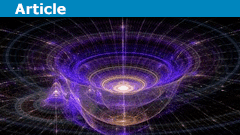

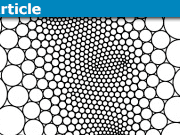
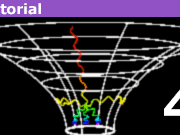
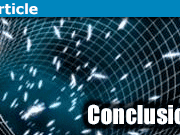
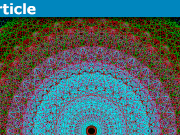
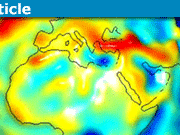
[QUOTE="haushofer, post: 5570708, member: 20128"]You mean because supersymmetric backgrounds necessarily have vanishing fermionic vev's?” So I was referring to "backgrounds with vanishing fermionic vev's" if you wish, yes. Whether they are supersymmetric or not (have Killing spinors or not) is not relevant for the particular statement I made, but of course these are examples, yes.
You mean because supersymmetric backgrounds necessarily have vanishing fermionic vev's? Thanks, I'll let the forum know whether I survived :P
[QUOTE="haushofer, post: 5570674, member: 20128"]what's the status of the equivalence principle then in SUGRA, where torsion is generated by a bi-spinor? If you locally try to make spacetime flat by moving inertially, you can still have spinor contributions to the geometry.”Yes, in supergravity there will always be non-vanishing super-component of the torsion. However, as discussed in the entry, for bosonic solutions in 11d supergravity it is the proper super-torsion that vanishes, and we are back to the situation that around every point to first order, spacetime looks like super-Minkowski spacetime. We still have the principle of equivalence then: setting the fermionic coordinates to zero, the situation is that of ordinary vanishing torsion, and the rheonomy principle then says that such ordinary bosonic solutions uniquely extend to superspace.[QUOTE="haushofer, post: 5570674, member: 20128"] I have my PhD defence this Friday”All my best wishes!
It will take some time for me to read your reference, especially since I have my PhD defence this Friday, but just a conceptual question which pops up in my mind: what's the status of the equivalence principle then in SUGRA, where torsion is generated by a bi-spinor? If you locally try to make spacetime flat by moving inertially, you can still have spinor contributions to the geometry.
[QUOTE="haushofer, post: 5565598, member: 20128"] The reason why I bring this up is because a while ago I tried to construct the D=4, N=2 supergravity version of Newton-Cartan, which, as in the relativistic case, cannot be obtained directly from a gauging of the underlying superalgebra. For the D=3, N=2 theory however this was possible. It would simplify life greatly if every SUGRA theory could be obtained in such a way by extended the underlying superalgebra similar to your notes :P”Let me come back to this. I still don't know the answer, but it did occur to me that there ought to be a formulation of ##N=2## ##D=4## sugra that more directly reflects the formulation of 11d sugra for which D'Auria-Fre and followups found the "secret gauging" that we talked about. And indeed it does, as also found by D'Auria and collaborators:
Using this, they give a re-derivation of ##N=2##, ##D=4## sugra (in the generality of massive twists, see also the introduction of Gunyadin-McReynolds-Zagerman 05) directly paralleling their earlier re-derivation of ##D=11## sugra. So this is the necessary first step for finding the 4d analog of that "secret gauging" that we discussed. I have made a quick note with more detailed pointers to the references on the nLab at 4d supergravity Lie 2-algebra
[QUOTE="EnigmaticField, post: 5570241, member: 570774"]Why is the vanishing torsion a manifestation of the principle of equivalence? ” By Guillemin's theorem, which I mentioned, vanishing torsion is equivalently the property that the spacetime looks like flat Minkowski spacetime to first order around every point. This immediately implies that locally to first order, the free fall of any particle in a field of gravity is inertial motion in Minkowski spacetime.One may think of this statement as a more conceptual version of the maybe more familiar computational statement that around every point there exist Riemann normal coordinates in terms of which the Levi-Civita connection (i.e. the unique torsion-free metric connection) vanishes at that point.
Why is the vanishing torsion (the invariance of the infinitesimal translation of the vielbein field up to the contribution from a Lorentz gauge transformation) a manifestation of the principle of equivalence? I have long understood that the vanishing curvature means the parallel transport is path independent, but keep wondering what's the physical interpretation of the vanishing torsion. Now I see this article says the vanishing torsion means the principle of equivalence; but how to see this? Further, if the vanishing torsion really means the equivalence principle, then isn't it the case that the teleparallel theory violates the equivalence principle?
[QUOTE="haushofer, post: 5565598, member: 20128"] The reason why I bring this up is because a while ago I tried to construct the D=4, N=2 supergravity version of Newton-Cartan, which, as in the relativistic case, cannot be obtained directly from a gauging of the underlying superalgebra. For the D=3, N=2 theory however this was possible. It would simplify life greatly if every SUGRA theory could be obtained in such a way by extended the underlying superalgebra similar to your notes :P”I don't know, but it does remind me of the following: on the level of just the Green-Schwarz sigma models for the branes then the pair of dimensions 11/10 appears in a pattern with the pair of dimensions 4/3, in that the "brane scan" sees a membrane/string pair in either case, see for instance Duff's original diagram here. This might indicate that the situation with 11d sugra that we just discussed has its counterpart in 4d. This would be really interesting.
I see. But here the link between the D=11 SUGRA and M-theory is clear. It's not clear at all if something similar can be done for other SUGRA's or what to expect. It's linked to the question whether every SUGRA can be obtained from some string theory by compactification and taking the low energy limit.The reason why I bring this up is because a while ago I tried to construct the D=4, N=2 supergravity version of Newton-Cartan, which, as in the relativistic case, cannot be obtained directly from a gauging of the underlying superalgebra. For the D=3, N=2 theory however this was possible. It would simplify life greatly if every SUGRA theory could be obtained in such a way by extended the underlying superalgebra similar to your notes :P
[QUOTE="haushofer, post: 5565370, member: 20128"]I'm not used to the mathematical treatment you're using in your notes, so it takes some effort for me to get to the punchline. Is the gauge treatment exactly equivalent to the usual D=11 sugra, or are there additional constraints on the three-form?” There are no additional constraints, on the contrary the "gauge treatment" overparameterizes the 3-forms. That's hidden in corollary 2.2 of the writeup, which observes that locally every 3-form arises from the "gauge treatment", in direct analogy to how generalized gemetry allows to parameterize 2-forms. So there is more degrees of freedom in the "gauge treatment", not less. The punchline of my note is to observe that this additional freedom is encoded by sections of the "exceptional tangent bundle" as originally proposed by Hull: the bosonic body of that "hidden supersymmetry algebra" of D'Auria-Fre and followups is in fact the M-theoretic exceptional tangent bundle of 11d super-Minkowski spacetime. The note means to point out that the "gauge treatment" comes down to proposing that the 3-form is always to be pulled back via a section of this exceptional tangent bundle, via a canonical 3-form carried by it. So the evident conjecture is that the "gauge treatment" is part of a solution to the problem as to the nature of the "hidden microscopic degrees of freedom" that are expected to be present in M-theory, given that they do appear as U-duality groups after high codimension compactifications.
I'm not used to the mathematical treatment you're using in your notes, so it takes some effort for me to get to the punchline. Is the gauge treatment exactly equivalent to the usual D=11 sugra, or are there additional constraints on the three-form?
[QUOTE="haushofer, post: 5564381, member: 20128"] However, this three-form is a composite field, so is this three-form equivalent to the original one? (regarding degrees of freedom, susy-transformations etc.)”I once made some tentative notes on precisely this question here: 11d SuGra from higher to exceptional geometry (web, pdf).
[QUOTE="haushofer, post: 5564381, member: 20128"] However, this three-form is a composite field, so is this three-form equivalent to the original one? (regarding degrees of freedom, susy-transformations etc.)”I once made some tentative notes on precisely this question here: 11d SuGra from higher to exceptional geometry (web, pdf).
Thanks for those links. I just scanned through the paper by de Azcarraga,https://arxiv.org/abs/hep-th/0406020which indeed suggests that the 11D case can be obtained by a gauging procedure. However, this three-form is a composite field, so is this three-form equivalent to the original one? (regarding degrees of freedom, susy-transformations etc.)It would be interesting to see if such an analysis would be possible for the D=4, N=2 case.
Afaik one can only obtain certain SUGRA's (the fields, transformations and curvatures) via gauging for special cases. E.g. for N=2, D=4 the graviton-multiplet contains the graviton, gravitino and vector field, but the SUSY-transformation rules of the vector field do not follow from the gauging (one can gauge the R-symmetry group, but that's a different cookie).
[QUOTE="haushofer, post: 5559957, member: 20128"] For the N=1, D=11 case this gauging does not work because the graviton-multiplet also contains the 3-form which is not a gauge field of the corresponding algebra (but maybe of some corresponding higher-spin algebra?) “Yes, the 3-form in 11d sugra is seen by the "supergravity Lie 3-algebra" extension of the 11d super-symmetry algebra, that I had talked about a bit in Part 2 "Homotopy Lie-n algebras in Supergravity" of the series. It was first recognized in its dual incarnation (as a "CIS" later also called "FDA" ) in
where they use it to give an elegant re-derivation of the action of 11d SuGra. (It starts appearing with equation (3.15d) in that article).But I haven't thought about whether this allows to do the analogous gauging procedure that you mention for 4d SuGra. It seems like it should. I'd have to think about it. That's a good point.
You mention the gauging of the Lorentz symmetries. In four dimensions you can obtain N=1 SUGRA by gauging the full super-Poincaré group, including local translations, LT's and supertransformations. In order to remove the local translations from your algebra you need to set the torsion (which is the field strength of translations) to zero. This is called a conventional constraint, because it enables one to solve for the spin connection. The same can be done in four dimensions for N=1 super-AdS, the Bargmann algebra, the N=2 super Bargmann algebra etc. For the N=1, D=11 case this gauging does not work because the graviton-multiplet also contains the 3-form which is not a gauge field of the corresponding algebra (but maybe of some corresponding higher-spin algebra?), but maybe this adds something to your article.